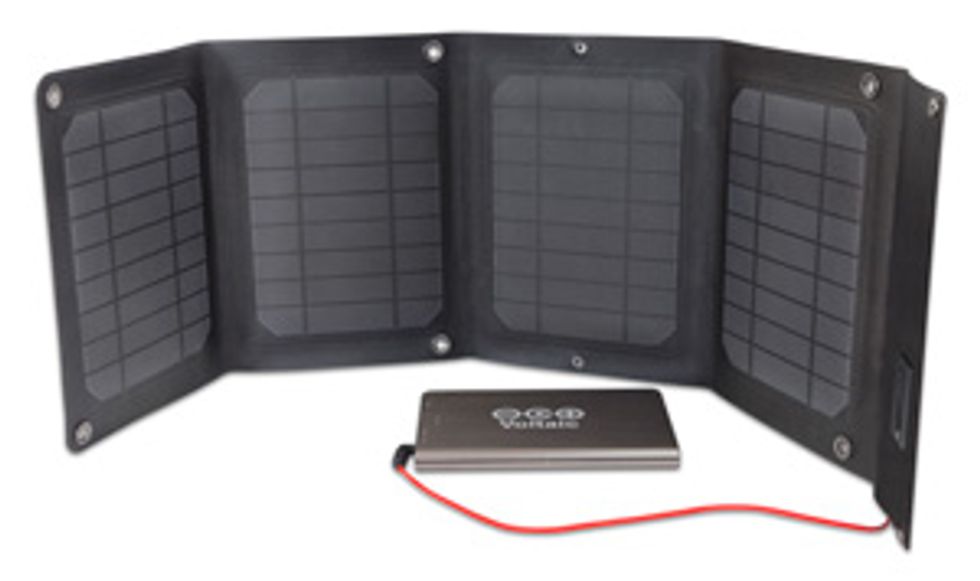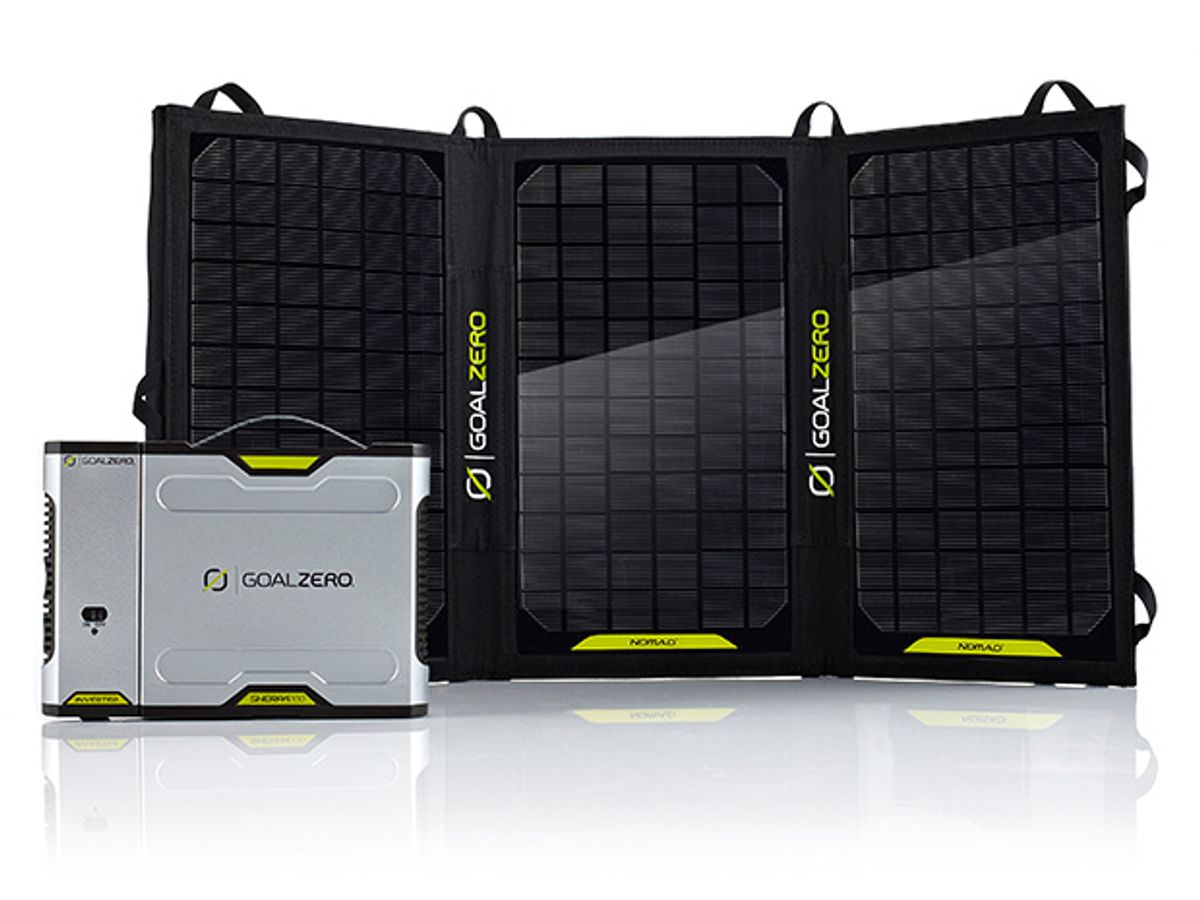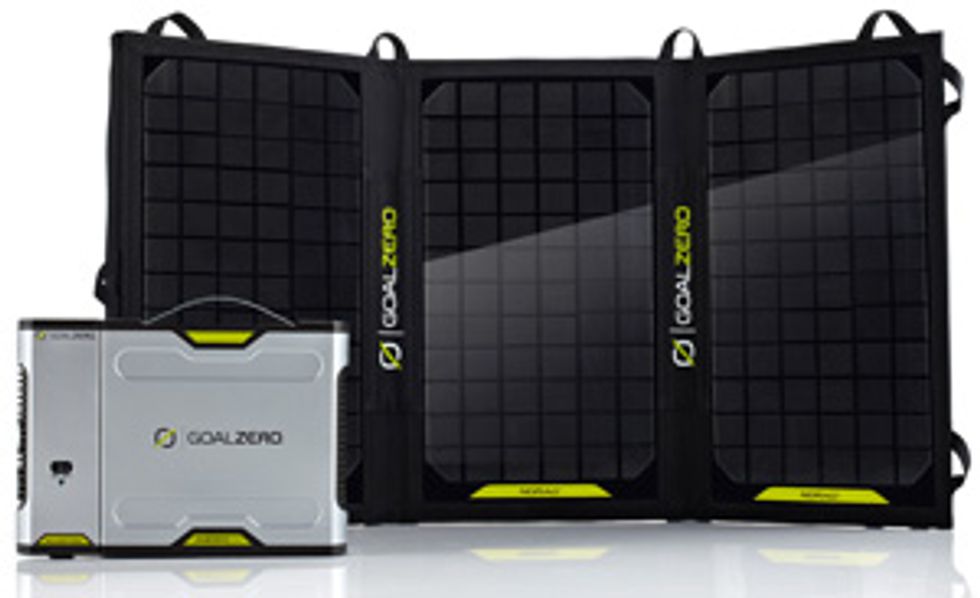
I’m not an outdoorsy person. But when a reporting assignment came up recently that required trekking in the Himalayas, there was really only one response: Yes!
The assignment would take me to a village that had no grid power and was a day’s hike from the nearest road. My photographer and I would be carrying two laptops, three digital cameras, and a smartphone between us. So finding a reliable and portable source of power was essential.
We were heading to the Ladakh region, a high-altitude desert blessed with a spectacular amount of solar radiation. Looking around for lightweight solar panels and batteries, I found plenty of options. I ended up trying out two units, loaned to us by the manufacturers: Goal Zero’s Sherpa 100 Solar Kit and Voltaic Systems’ Arc 20W Solar Charger Kit.
Goal Zero is a well-established company, and its US $550 Sherpa 100 kit comes with an 8,800-milliampere-hour lithium-ion battery, a detachable 110-volt AC inverter, and a 20-watt solar panel that folds down to 33 by 21 by 2.5 centimeters. The battery has two USB ports, a laptop port, and a 12-volt port. I never found a use for the latter, but it’s designated for lighting. Also included are an AC wall-outlet adapter and car-lighter adapter. The entire kit weighs 2 kilograms.
Voltaic Systems is an up-and-coming player. Its $278 kit comes with a 19,800-mAh lithium-polymer battery, a 20-W solar panel that folds to 19 by 25.5 by 2 cm, plus an AC adapter and lighter adapter. The battery has one 5-V USB port and a DC port for laptop charging. The kit weighs 1.5 kg.
One key difference between the kits is the inverter—Goal Zero’s has one, Voltaic’s does not. The inverter screws into the battery and lets you pretend you have a wall outlet (within reason, of course; you wouldn’t use it to run a refrigerator). But it adds bulk—159 grams—and you lose some energy in converting DC to AC.
Rather than an inverter, Voltaic’s system relies on an impressive array of DC adapters and USB chargers. I got USB battery chargers for our Sony and Canon cameras ($7.50 to $10 each) and a Magsafe 2 adapter ($20) for our Apple MacBook Pros.
The solar panels are light and flexible enough to be draped from backpacks, so in theory I could have charged as I hiked. I didn’t actually do that. Instead, once we reached our destination, I located a flat, unshaded spot. When the morning sun emerged, I laid out the panels, angled them toward the light, and connected the batteries. Goal Zero’s instructions caution against letting the battery get too hot, but I didn’t find that to be a problem. What was an issue was the ever-present dust, which had me wiping off the panels several times a day.
My photographer and I never wanted for power. Every night she downloaded photos and video from her cameras and her iPhone to her laptop, backed them up to an external drive, and recharged the occasional camera battery. I used my computer and camera more sparingly, but I obliged several requests from others to recharge phones, cameras, and a GoPro.
The panels got about 10 hours of sun daily. The Goal Zero battery is supposed to take 10 to 20 hours to fully charge, but even when the battery started from a partial charge, it never reached 100 percent. Several times scattered clouds caused the unit to stop charging. Those same clouds did not pose a problem for the Voltaic system. Voltaic’s battery, which the company says takes 7 to 10 hours to charge in full sun, did indeed fully charge every day.
So which system did I prefer? Both seem well made and engineered, but the Voltaic system had the edge in solar charging. And factoring in the significant difference in price and weight, I’ll opt for Voltaic for my next off-grid adventure.
This article was corrected on 28 October. The Voltaic battery has a charge of 19,800 milliampere hours, not 2,200 mAh.

